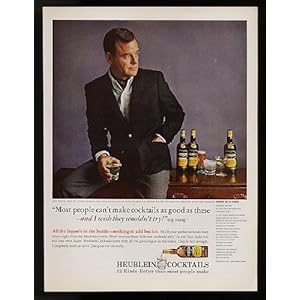
If you’re in the marketing business (or the business of marketing), you ought to occasionally look at the past to see a reflection of the future. I happen to own a copy of Life magazine, May 28 1965. Can’t remember why I got it – I would have been a toddler at the time it was originally printed. I suspect it was acquired from one of those funny little shops you find in most towns that stock old books, vintage magazines, and old Coca Cola bottles on the shelves, complete with a layer of dust and a smell of Grandma’s sitting room.
As you leaf through the pages, you pass stories of the newly dedicated JFK memorial at Runnymeade in England

Yet what is particularly interesting when you look at old magazines are the brands that survived … and those that didn’t. From this issue, our survivor list includes Hanes, Contac cold relief, Clairol, Mobil (albeit now Exxon Mobil), Prudential, Carnation instant breakfast (did we, and do we, still buy the notion that one glass equates to two eggs, two strips of bacon, two slices toast and fresh orange juice?), and Canada Dry Ginger Ale. Many brands featured - Libbie’s sloppy joe sauce, Heublein cocktails, Champale ale - were over time swallowed up by other companies. And many have disappeared from the US
What separates those that are still with us and afforded national marketing support, and those which fell down and fell prey to acquisition, merger, second tier brand status, and/or discontinuation? Each brand has a story to tell, a history rich with triumphs and failures, which no doubt someone somewhere may still know. For example, what befell the Gibson refrigerator company? In Life, Gibson had a tip in promotion called the “Frost Clear Sweepstakes” offering 5000 prizes valued at over $1,000,000. Nice job of working a product benefit into a theme, by the way. It’s now owned by Electrolux, and doesn’t seem to have much marketing support despite a heritage dating back to 1877. Did some distributor pull the plug, leading to the Electrolux acquisition? Did a brand manager push a product innovation which failed? Did the Marketing Director stick with the turd brown color when lime green became the rage? Or did one of the winners of 100 VIP jet vacations on Pan Am to Puerto Rico get sunburn and sue the company who had failed to take out insurance against such promotional mishaps?
Yet what is also fascinating about this edition is an ad for Encyclopedia Americana. This brand is still with us today, owned by Scholastic and moved more on-line for its sales rather than strictly print. What caught my eye was the body copy in the ad for their encyclopedias, which is about as future proof as you can get:
“The question is, how to make those facts interesting and meaningful and memorable – and worth staying awake for. We do it by hiring a whole faculty of writer-teachers who are not only experts on their subjects but who know how to tell a good story, too.”
Remember, this is 1965 we’re talking about here. Yet in that simple line of copy we see what today many 1000’s of digital agencies, content producers, social media experts, and brands are all saying over and over again, as if it were something innovative. Americana
Like I said, you can learn a lot by looking backwards to look forwards.

Almost makes me want to buy the Marlin by Rambler (part of AMC), with it’s 327 cu.-in. V-8, power disc brakes, and, hold onto your hats, adjustable reclining front seats as standard. This was the car from his youth which Mitt Romney bemoaned during his gubernatorial campaign in 2002 as being “kinda awful” and his wife described as “goofy looking”. Interesting that Romney didn’t mention his father’s occupation at the time he had the Marlin: Chairman and CEO of AMC.
Sorry, Paul. You lost me at the "man-size Jotter."
ReplyDeleteHistory repeats itself. The human condition. It's just accelerating now due to technology. Nice blog post.
ReplyDelete